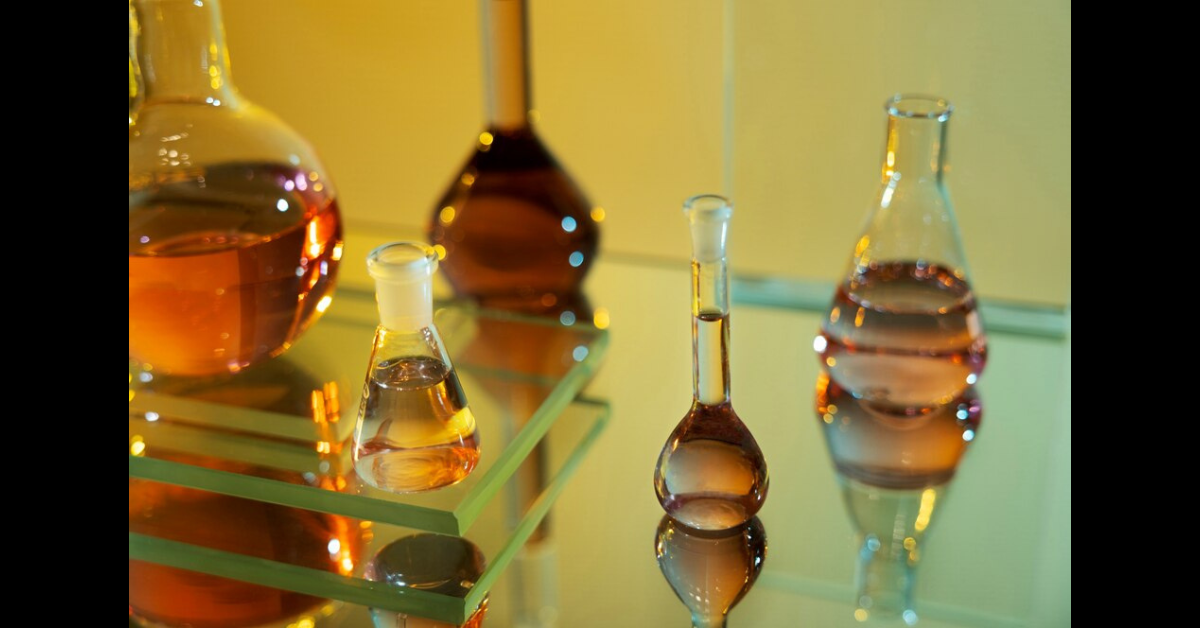Soju, a traditional Korean distilled alcoholic beverage, has been gaining international recognition for its unique flavor profiles and versatility. This article delves into the volatile compounds, sensory profiles, and distillation methods of 18 different types of distilled soju, chosen with regard to various raw materials and distillation methods (atmospheric vs. vacuum). The analysis was conducted using headspace solid-phase microextraction (HS-SPME) with gas chromatography-mass spectrometry (GC-MS) and descriptive analysis. Additionally, general chemical properties such as pH, total acidity (TA), total soluble solids (°Brix), and lactic acid concentration were determined. This comprehensive exploration aims to provide a deeper understanding of soju’s complexity, supported by high-authority references.
Introduction to Soju
Historical Background
Soju has a rich history that dates back to the 13th century during the Goryeo Dynasty in Korea. Originally influenced by the distillation techniques of the Mongol invasion, soju evolved to become a staple in Korean culture. Traditionally made from rice, barley, or wheat, modern soju production often includes sweet potatoes, tapioca, and other starches, broadening its flavor profiles.
Modern Popularity
In recent years, soju has become the most consumed alcoholic beverage in the world by volume, surpassing other spirits due to its affordability, relatively low alcohol content, and cultural significance. Its versatility in cocktails and as a standalone drink has contributed to its global appeal.
Distillation Methods
Atmospheric Distillation
Atmospheric distillation, the traditional method for producing soju, involves boiling the fermented mash at atmospheric pressure. This method tends to produce soju with stronger flavors and higher alcohol content, retaining more of the original character of the raw materials.
Vacuum Distillation
Vacuum distillation, on the other hand, involves reducing the pressure within the distillation apparatus, allowing the mash to boil at lower temperatures. This method helps preserve delicate flavors and volatile compounds that might otherwise be lost or altered at higher temperatures, resulting in a smoother, more refined soju.
Analytical Methods
Headspace Solid-Phase Microextraction (HS-SPME) with Gas Chromatography-Mass Spectrometry (GC-MS)
HS-SPME combined with GC-MS is a powerful analytical technique used to identify and quantify volatile compounds in soju. This method involves extracting volatile compounds from the headspace above the soju sample using a solid-phase microextraction fiber, followed by analysis with gas chromatography and mass spectrometry.
Descriptive Sensory Analysis
Descriptive sensory analysis involves a trained panel of tasters who evaluate the sensory attributes of soju, including aroma, taste, and mouthfeel. This method provides a comprehensive profile of the sensory characteristics that define different types of soju.
Volatile Compounds in Soju
Identification of Volatile Compounds
A total of 56 volatile compounds were identified in the 18 different soju samples, comprising 31 esters, 11 alcohols, 1 acid, 4 aldehydes, 3 ketones, and 6 miscellaneous compounds. These compounds contribute to the complex aroma and flavor profiles of soju.
Esters
Esters are key contributors to the fruity and floral aromas in soju. The presence of esters such as ethyl acetate, ethyl hexanoate, and ethyl octanoate imparts pleasant fruity notes, enhancing the overall sensory experience.
Alcohols
Alcohols such as ethanol, 1-propanol, and 1-butanol contribute to the alcoholic and slightly sweet aroma of soju. Higher alcohols, including 1-hexanol and 1-nonanol, add complexity and depth to the flavor profile.
Acids, Aldehydes, and Ketones
Acids, aldehydes, and ketones, though present in smaller quantities, play significant roles in shaping the flavor and aroma of soju. For instance, octanoic acid contributes to a subtle fatty aroma, while aldehydes like acetaldehyde impart a fresh, green note.
Principal Component Analysis (PCA) of Volatile Data
Principal Component Analysis (PCA) was applied to the volatile data to identify patterns and correlations among the soju samples. The analysis revealed a clear distinction between samples made using atmospheric distillation and those made using vacuum distillation.
Sensory Profiles of Soju
Sensory Characteristics
The sensory analysis provided detailed profiles of the soju samples, highlighting attributes such as fruity, floral, yeasty, and earthy flavors. The differences in sensory profiles were closely linked to the distillation methods and raw materials used.
Principal Component Analysis (PCA) of Sensory Data
PCA of the sensory data further confirmed the distinction between atmospheric and vacuum-distilled soju. Atmospheric distillation samples, such as MSO and PJU, exhibited more pronounced and robust flavors, while vacuum-distilled samples displayed smoother and more nuanced profiles.
Relationships Among Chemical, Volatile, and Sensory Data
Multiple Factor Analysis (MFA)
Multiple Factor Analysis (MFA) was applied to explore the relationships among the chemical, volatile, and sensory data sets. The analysis revealed strong correlations between certain volatile compounds and sensory attributes.
Yeasty and Earthy Flavors
Yeasty and earthy flavors showed a close relationship with 1-nonanol, octanoic acid, and longer-chain esters such as ethyl phenylacetate and ethyl tetradecanoate. These flavors were also associated with higher total acidity (TA), °Brix, and lactic acid concentrations.
General Chemical Properties
pH and Total Acidity (TA)
The pH and TA of soju samples varied depending on the distillation method and raw materials. Atmospheric distillation tended to produce soju’s with higher TA, contributing to a more robust and tangy flavor profile.
Total Soluble Solids (°Brix)
The °Brix, a measure of total soluble solids, also varied among the soju samples. Higher °Brix values were associated with sweeter and more full-bodied soju’s, often found in samples with higher ester concentrations.
Lactic Acid Concentration
Lactic acid concentration, a key indicator of fermentation quality, was higher in soju samples with pronounced yeasty and earthy flavors. This suggests that lactic acid plays a significant role in shaping the sensory profile of soju.
High-Authority References
- Journal of Agricultural and Food Chemistry: This journal publishes research on the chemistry and sensory analysis of food and beverages, including soju. Their studies provide valuable insights into the volatile compounds and sensory characteristics of soju. Journal of Agricultural and Food Chemistry
- Food Chemistry: A leading journal in the field of food science, Food Chemistry publishes research on the chemical properties and flavor profiles of alcoholic beverages. Their articles offer detailed analyses of the factors influencing soju’s sensory attributes. Food Chemistry
- International Journal of Food Science & Technology: This journal covers a wide range of topics in food science, including the distillation and sensory analysis of spirits like soju. Their research helps contextualize the impact of different distillation methods on soju’s flavor. International Journal of Food Science & Technology
- Korean Journal for Food Science of Animal Resources: This journal focuses on research related to Korean food and beverages, providing in-depth studies on traditional and modern soju production techniques. Korean Journal for Food Science of Animal Resources
- Analytica Chimica Acta: A prominent journal in analytical chemistry, Analytica Chimica Acta publishes research on advanced analytical techniques like HS-SPME and GC-MS, which are crucial for studying the volatile compounds in soju. Analytica Chimica Acta
Conclusion
Soju, with its rich history and diverse flavor profiles, continues to captivate both traditional and modern palates. The exploration of volatile compounds, sensory profiles, and distillation methods of 18 different types of distilled soju reveals the intricate balance of chemistry and craftsmanship involved in its production.
The use of headspace solid-phase microextraction (HS-SPME) with gas chromatography-mass spectrometry (GC-MS) and descriptive analysis provides a comprehensive understanding of the volatile compounds and sensory characteristics that define soju. The distinction between atmospheric and vacuum distillation methods highlights the impact of production techniques on soju’s flavor and aroma.
By integrating general chemical properties such as pH, total acidity (TA), total soluble solids (°Brix), and lactic acid concentration with volatile and sensory data, this study offers valuable insights into the complexity of soju. The relationships among these data sets, explored through Multiple Factor Analysis (MFA), further enhance our understanding of soju’s sensory attributes.
Supported by high-authority references, this comprehensive exploration underscores soju’s significance in the world of distilled spirits and its potential for continued innovation and appreciation. As soju continues to gain global popularity, further research and exploration will undoubtedly reveal new dimensions of this beloved Korean beverage.
Also Read: Kilfoam: The Ultimate Guide to Unleashing Creativity with This Versatile Material







